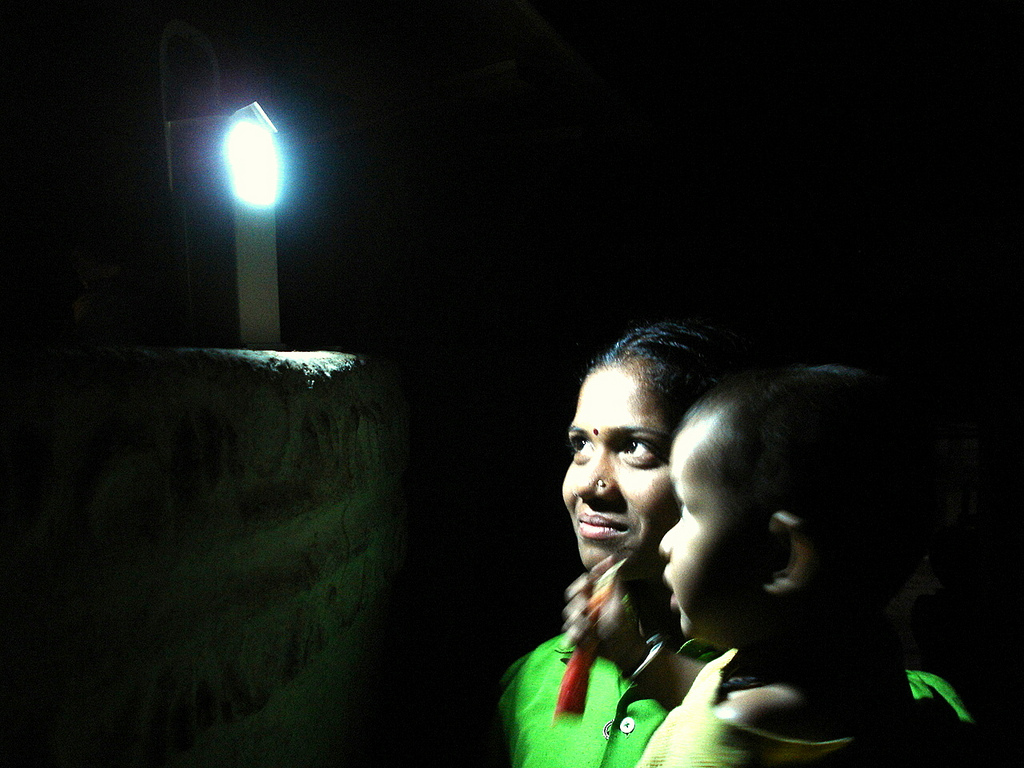India has pledged to provide 100% electricity for 24×7 by 2018 through a scheme called ‘Saubhagya.’ According to the Saubhagya website, to date out of 181 households, 22% are yet to be electrified. It means 38 million households still have no access to electricity. And if they need to be electrified, the government has to electrify at a rate of 3.4 million households every month from now until December 2018.
Bloomberg New Energy Finance (BNEF) finds that India has to increase the rate of delivering electricity to its rural population ten-fold to achieve its ambitious target of 24/7 power for all by early 2019.
At the same time, there is growing consensus among experts that flexible, quality decentralized renewable energy (DRE) solutions like home solar and mini-grids are essential to achieving universal access for India’s 33% population still living without electricity.
India has central subsidies for solar, and few subsidies for off-grid and solar pumps solutions and wind, but there is no significant central financial assistance for decentralized solutions or for energy storage, which is an essential part of decentralized RE systems.
Additionally, India’s Finance Minister Arun Jaitley has addressed the nation, announcing the 2019 fiscal Budget and stating: “We are spending INR 160 billion ($2.5 billion) under this scheme.”
Despite this state of affairs pointing to a significant role for distributed solutions and a defined scheme, the new analysis by the International Institute for Sustainable Developemnt (IISD) reveals that such technologies get virtually no government support.
According to 2016 data, India gave just 0.8% of its electricity subsidies, or $159 million, for distributed solutions, while coal, oil, and gas (O&G) and transmission and distribution (T&D) received $19.8 billion.
Much of those subsidies support for T&D and O&G are price support for artificially low consumer tariffs and electricity sector bailouts.
Opportunites
What is the opportunity cost (or deferred socio-economic dividend) of this business-as-usual approach? According to IISD:
- Annual subsidies provided for coal alone are enough to fund job training for more than 72 million Indians. Furthermore, distributed lighting solutions can create nine-times more jobs than solutions using conventional fuels.
- If reallocated to healthcare, the annual coal subsidy would increase per capita government healthcare spending by 40%.
- Distributed solutions are also a more cost-effective solution—annual coal subsidies ($2.3 billion) could pay for almost 114 million solar lamps.
- Electricity generated from coal has the highest levels of carbon emission (0.98kg/kWh), followed by gas (0.3kg/kWh), and renewables (zero for solar and wind). The current subsidy structure invests most heavily in the dirtiest fuel sources.
An earlier analysis by IISD showed that recent government savings from reduced kerosene subsidies have freed up billions of dollars, but it is still unclear whether these savings will be passed on to the states, nor is there an inclusive mechanism for such a transfer to take place. This is important because kerosene pricing reform presents an opportunity for transitioning rural households to solar lighting.
It is clear from the new data that reforming electricity subsidy to reduce overall payment and more effectively target renewables and distributed solutions can lead to lower emissions, stronger job creation, and increased welfare.
This content is protected by copyright and may not be reused. If you want to cooperate with us and would like to reuse some of our content, please contact: editors@pv-magazine.com.








By submitting this form you agree to pv magazine using your data for the purposes of publishing your comment.
Your personal data will only be disclosed or otherwise transmitted to third parties for the purposes of spam filtering or if this is necessary for technical maintenance of the website. Any other transfer to third parties will not take place unless this is justified on the basis of applicable data protection regulations or if pv magazine is legally obliged to do so.
You may revoke this consent at any time with effect for the future, in which case your personal data will be deleted immediately. Otherwise, your data will be deleted if pv magazine has processed your request or the purpose of data storage is fulfilled.
Further information on data privacy can be found in our Data Protection Policy.